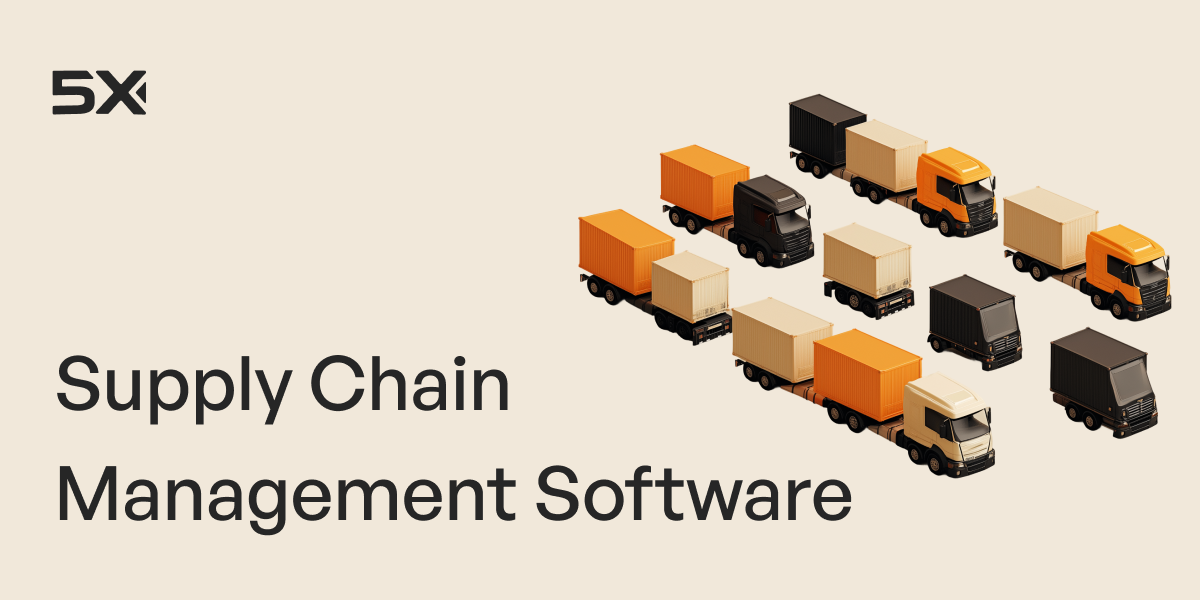Table of Contents
Whether you’re working with time-series data, distributed systems, or categorical datasets, partitioning allows for faster queries, better resource utilization, and improved scalability.
When done right, data partitioning can improve the performance of queries, reduce storage costs, and give you unparalleled insights and business intelligence. When executed inefficiently, data partitioning can lead to performance bottlenecks and increased complexity.
Read on to gain an in-depth understanding of data partitioning, its benefits and categories, and explore best practices to implement data partitioning correctly for your unique use case.
What is data partitioning?

After data ingestion and partitioning happens, data is loaded into a data warehouse, where it can be queried and analyzed for business intelligence and reporting purposes.
Simply put, data partitioning is what happens to data after it is collected from various sources. It refers to the process of dividing large datasets into smaller subsets or partitions, based on a specific criteria. The goal is to create structured partitioned data that is fit for warehousing.
Data partitioning allows each partition to be stored separately and allows for parallel processing and more efficient data retrieval. This enhances query performance, reduces the strain on database resources, and makes large volumes of data easier to manage.
Splitting data into smaller chunks also allows your business to focus queries on relevant subsets of data, reducing the amount of data that needs to be scanned. This means you can focus your time on analyzing data that’s relevant to your business goals.
You may have heard of the usage of data partitioning in DBMS, but it is also commonly used in distributed file systems, and partitioning big data processing frameworks too.
Benefits of data partitioning: Why is it important?
As data volumes grow exponentially, organizations face performance challenges when running queries and maintaining their data infrastructure.
Here’s how data partitioning can help your business:
- Improved query performance: With data partitioning, your queries can focus on a subset of data, rather than scanning an entire table, leading to faster query response times
- Better resource utilization: Partitioning allows efficient management of workloads as processing gets distributed across multiple partitions. This enables parallel processing and reduces the load on one single resource
- Scalability: The more data you have, the harder it is to maintain its performance. Partitioning makes it easier to scale a database as it allows you to add new partitions as and when data increases without requiring major architectural changes
- Data management and maintenance: Partitioning simplifies data purging, archiving, and backups. You can target specific partitions for these tasks, reducing the need to work with the entire dataset in one go
- Enhanced availability: In distributed systems, partitioning can increase data availability. When data is split across nodes, failure in one node doesn’t affect access to other partitions, thus improving overall system resilience
- Cost-effective storage: Partitioning allows organizations to optimize storage by keeping frequently accessed data in faster storage tiers while moving older or less frequently used partitions to cheaper storage options
Types of data partitioning:
Each method of partitioning data is suited to different use cases and workloads. Understanding these partitioning methods can help you choose the right one for your system:
- Horizontal partitioning
- Vertical partitioning
- Hybrid partitioning
Type 1. Horizontal partitioning (row partitioning)
Horizontal partitioning, also known as sharding, involves splitting a database table into multiple smaller tables (shards), where each partition contains a subset of rows based on a specific key or range of values. All partitions have the same columns but store different rows of data.
Horizontal partitioning is ideal for applications with large datasets that grow rapidly, such as social media platforms or e-commerce websites.
Here are the different categories of horizontal partitioning:
1. Range Partitioning
Range partitioning of data means dividing data based on specific ranges of values such as dates or numerical values. Each partition contains data that falls within a specific range, and queries targeting a particular range will only scan the relevant partition.
Range partitioning is ideal for time-series data, such as logs, event tracking, or financial transactions.
Use case of range partitioning:
- Financial transactions: Financial institutions can use range partitioning to organize transaction records by date to produce reports when audits happen. For example, a bank can partition transaction data by months to understand performance of each month in the year
- Time-series data: Range partitioning is ideal for databases dealing with time-sensitive information such as logs, events, sales, and transactions. Partitioning sales data by month or year enables faster retrieval when querying a specific time frame. For example, retail companies can partition their order table by date
- Sensor data: IoT applications can use range partitioning to reduce the scan time when retrieving recent or historical data. For example, a smart energy company can partition electricity usage data by day or week to analyze usage patterns
2. List Partitioning
Using list partitioning, you can divide your data based on a predefined list of values for a specific column in the table. Each partition contains rows that match one or more values in the list.
List partitioning is ideal for segmenting categorical data such as product type, countries, or departments in a company.
Use case of list partitioning:
- User roles or segments: SaaS companies can partition their user database by role or subscription type (free vs. premium users). For example, a software company can partition its user data by subscription tier, so they can make meaningful tweaks to their subscription plans over time and adjust their bundle offering accordingly
- Geographical data: List partitioning is ideal for data that can be naturally segmented by specific values, such as countries, regions, or states. For example, a global retail company might partition customer data by country, with separate partitions for the USA, UK, India, and other countries, to understand which geography is profitable or loss-making
- Product categories: eCommerce companies can use list partitioning to manage product data by specific categories such as electronics, clothing, or home goods. For example: An online retailer could partition its product catalog by product type such as "Electronics," "Furniture," "Clothing", to understand which category brings home the most money
3. Hash Partitioning
In hash partitioning, a hash function is applied to the partition key to determine the partition where the data will be stored. This results in an even distribution of data across all partitions.
Use case of hash partitioning:
- Distributed databases: Hash partitioning is useful in systems where even distribution of data across nodes is critical for performance and balancing loads. For example, a distributed database system can use hash partitioning to ensure user data is evenly spread across multiple servers, ensuring no single server becomes overloaded with too much data
- Non-sequential data: When there is no natural range for partitioning (such as non-sequential user IDs or random transaction IDs), hash partitioning helps balance the data evenly. For example, an online service handling millions of user interactions per minute might use hash partitioning on user IDs to spread requests evenly across its infrastructure
- High-volume data ingestion: Hash partitioning is suitable for applications that ingest large amounts of data. It ensures that incoming data is evenly distributed, avoiding performance bottlenecks. For example, a company processing large volumes of log entries from different sources can use hash partitioning on log IDs or server IDs to balance storage and query loads
4. Composite Partitioning
Composite partitioning is a hybrid approach that combines two or more partitioning strategies (example: range-list or range-hash). It allows for more fine-tuned partitioning based on multiple dimensions, such as time and geography, or time and user type.
Use case of composite partitioning:
- Time and geography: Combining range and list partitioning enables databases to partition data based on factors like date and region. For example, a global logistics company might partition its shipment data by date (range partitioning) and country (list partitioning), to calculate which shipment is reaching its destination by what time
- Product sales data: eCommerce companies can combine range and list partitioning to optimize sales data storage. For example, sales data can be partitioned by time (range) and product category (list). For example, a retailer might partition sales data by year and further by product categories – this will help him understand if the company has made year-on-year sales progress, and if yes, in which categories
Type 2. Vertical database partitioning (column partitioning)
Vertical partitioning involves dividing a database table into smaller, more manageable segments by grouping related columns into separate partitions. Each partition contains a subset of columns but all rows of the table. This method optimizes performance by isolating frequently queried or updated columns in their own partitions, reducing the amount of data scanned during queries.
Vertical database partitioning is useful when different applications or queries focus on specific columns within a large table. For example, in a customer database, basic customer information (name, email, contact details) can be stored in one partition, while less frequently accessed details (such as marketing preferences or social media accounts) can be stored in another. This reduces query time and storage requirements for frequently accessed data.
Type 3. Functional partitioning
Functional partitioning divides a system or database into different components based on the specific functions or modules of the application. Each partition handles a distinct business function, such as orders, customers, or inventory, isolating different workflows or services in separate partitions.
Functional partitioning is common in microservices architecture, where each service (e.g., customer management, order processing, inventory control) operates independently.
For example, an e-commerce platform might partition its services by function, so the customer service, order service, and payment service are separated. This improves scale, management, and development speed as each function evolves independently without affecting the others.
Best practices for implementing data partitioning
To achieve the full benefits of data partitioning, follow these best practices during implementation:
- Choose the right partition key: Select a partition key that reflects how data is most queried. If most queries filter by date, use a date column as the partition key to improve performance
- Index partitions efficiently: Use indexes to further optimize queries within partitions
- Avoid too many partitions: Having too much partitioned data can lead to overhead and slow down queries. Keep the number of partitions under control for optimal performance
- Monitor partition size: Ensure that partitions are evenly distributed in terms of size. Uneven partition sizes can reduce performance if some partitions are queried more than others
- Regularly archive & purge old partitions: Doing this reduces the amount of data scanned and improves overall performance
- Leverage automation tools: Leverage databases (Oracle, MySQL, etc.) that provide built-in support for partitioning to manage large datasets to keep up with growing data
Conclusion
Data partitioning in Big Data Warehouse is crucial for managing and optimizing large datasets, but it requires careful planning and execution. By understanding your query patterns, choosing the right partitioning strategy, and following best practices, you can improve database performance.
Ultimately, the right approach to data partitioning will depend on the nature of your data and the specific requirements of your system. With thoughtful implementation, partitioning can become a vital part of your data management strategy, enabling your business to handle growing data volumes with ease. For a seamless data partitioning experience, we recommend 5X.
What is an example of data partitioning?

How can I format basic data partition?

What are the two main partitioning methods?

What are the different steps I can follow for implementing data partitioning?

Building a data platform doesn’t have to be hectic. Spending over four months and 20% dev time just to set up your data platform is ridiculous. Make 5X your data partner with faster setups, lower upfront costs, and 0% dev time. Let your data engineering team focus on actioning insights, not building infrastructure ;)
Book a free consultationHere are some next steps you can take:
- Want to see it in action? Request a free demo.
- Want more guidance on using Preset via 5X? Explore our Help Docs.
- Ready to consolidate your data pipeline? Chat with us now.
Get notified when a new article is released
Get an end-to-end use case built in 48 hours
Get an end-to-end use case built in 48 hours

How retail leaders unlock hidden profits and 10% margins
Retailers are sitting on untapped profit opportunities—through pricing, inventory, and procurement. Find out how to uncover these hidden gains in our free webinar.
Save your spot








%201.svg)









